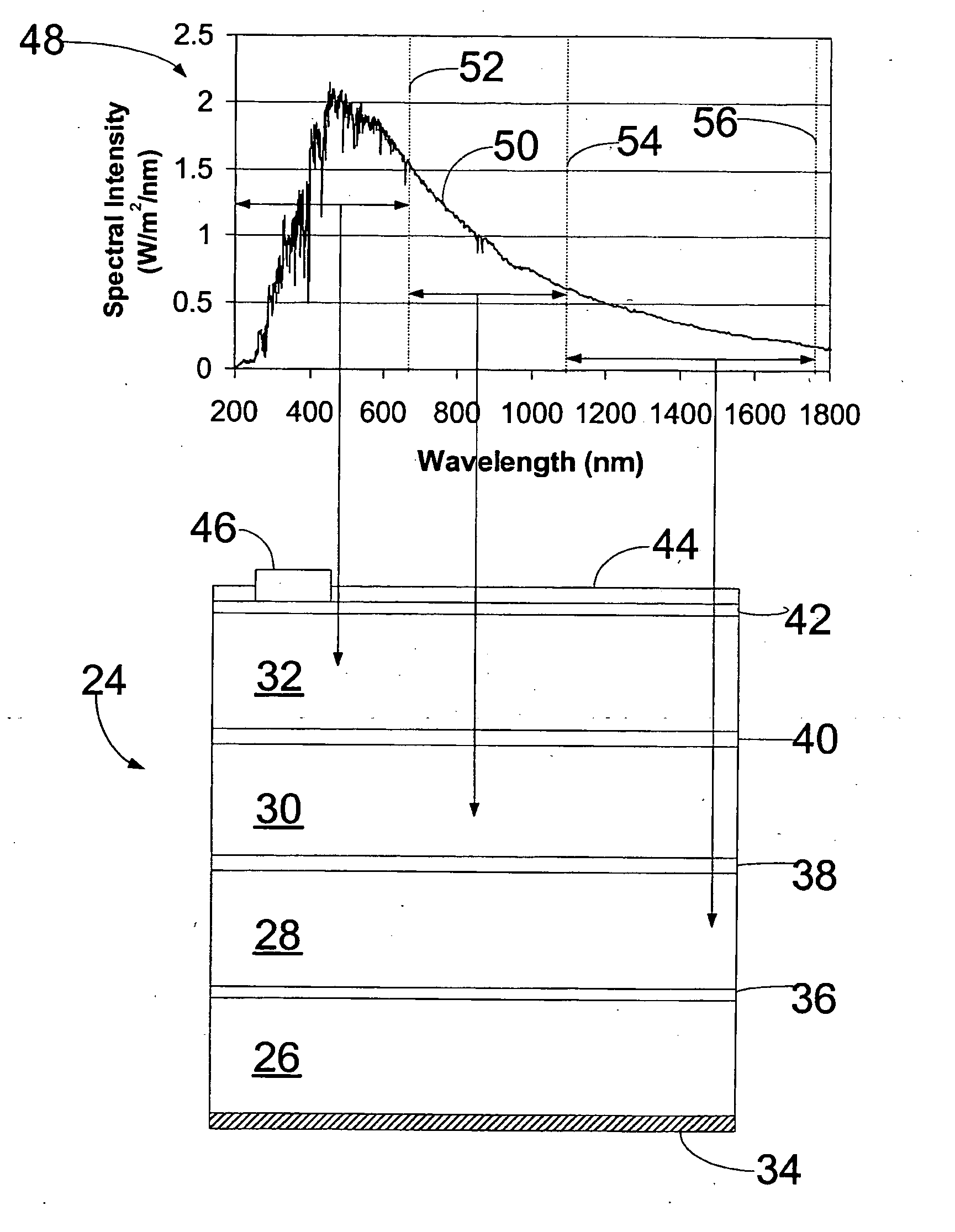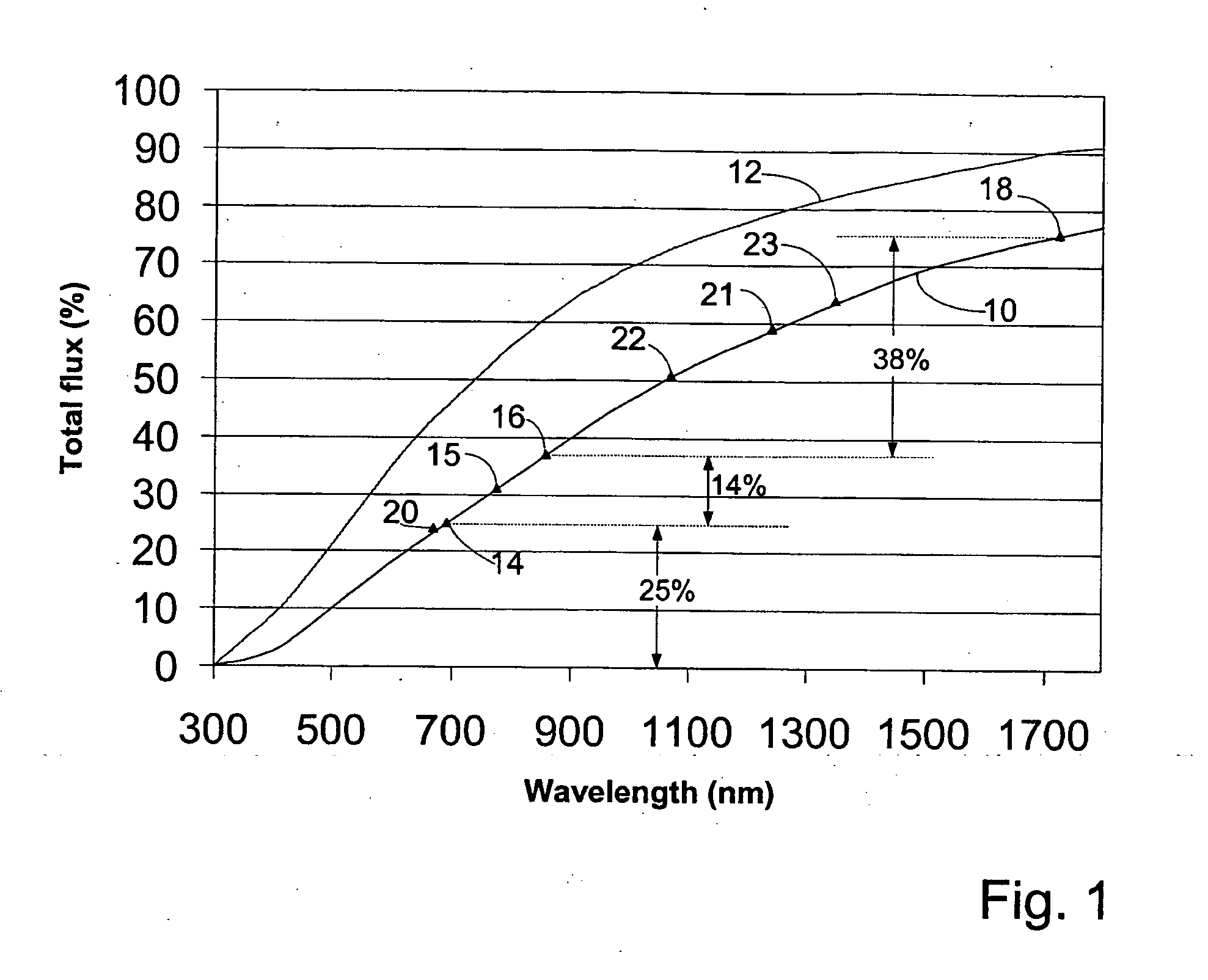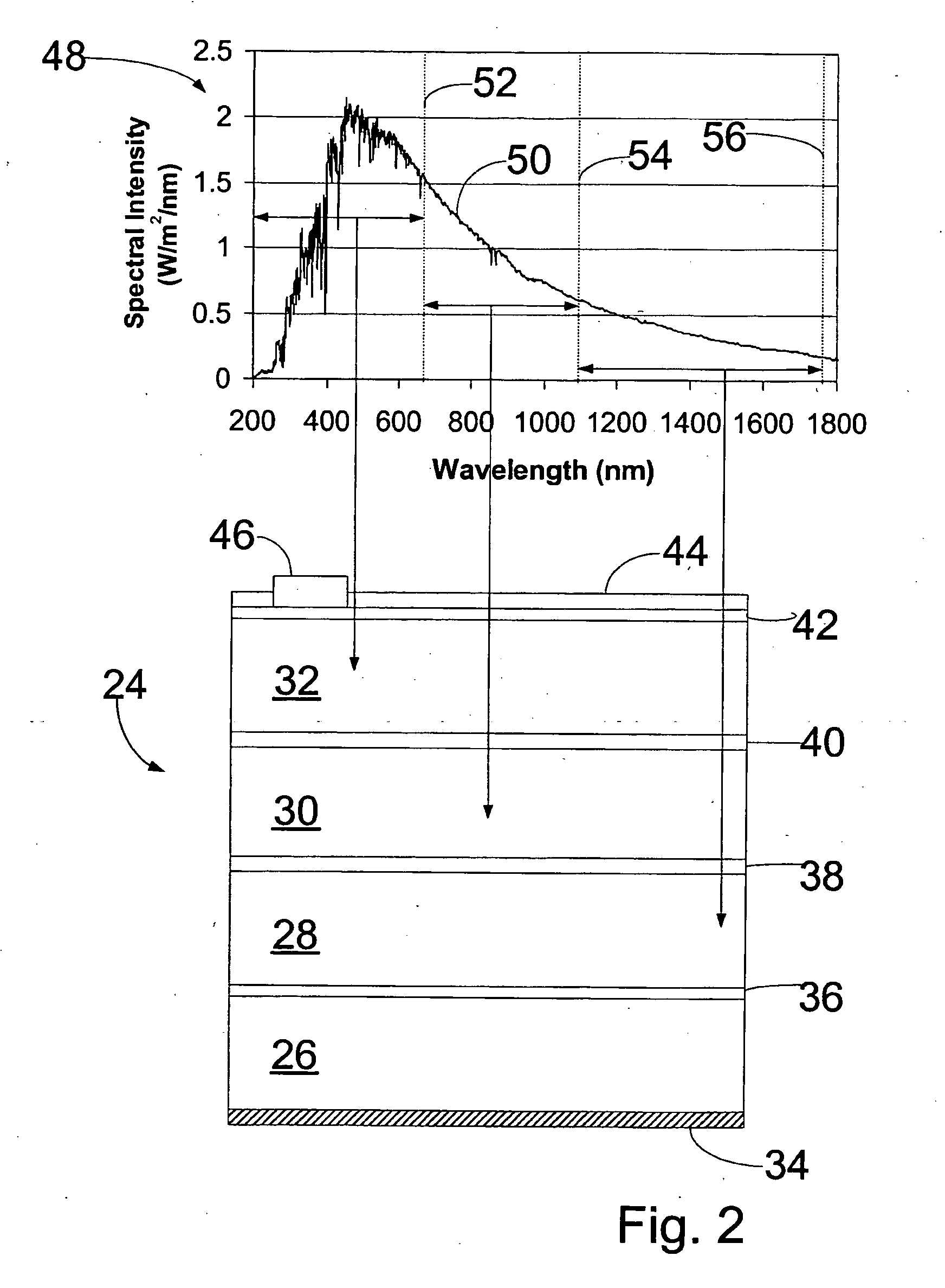Solar cell with epitaxially grown quantum dot material
a quantum dot material and solar cell technology, applied in the field of photovoltaic solar cells, can solve the problems of current limitation of four subcells, imbalance of multijunction cells, and insufficient solar photon absorption of gaas subcells
- Summary
- Abstract
- Description
- Claims
- Application Information
AI Technical Summary
Benefits of technology
Problems solved by technology
Method used
Image
Examples
first embodiment
[0033] The first embodiment is a high efficiency monolithic three-junction photovoltaic solar cell. Three-junction photovoltaic solar cells can be fabricated by stacking p-n or n-p junctions made of different semiconductor materials. As stated above, conversion efficiencies of approximately 30% have been obtained using a Ge bottom subcell grown on a Ge substrate, with a GaAs middle subcell and a GaInP or AlGaAs top subcell. The efficiency of such a multijunction photovoltaic solar cell is improved in the present invention by using self-assembled quantum dot material in the middle subcell instead of bulk GaAs.
[0034] The principle of the invention is illustrated in FIG. 1 where plot 10 shows the percentage of the AM0 solar photon flux, integrated from the 200 nm wavelength, as a function of wavelength, and plot 12 shows the percentage of the AM0 solar power flux integrated from 200 nm wavelength as a function of wavelength. Reference numerals on plot 10 indicate semiconductor material...
second embodiment
[0056] the invention provides high efficiency monolithic four-junction photovoltaic solar cells. Self-assembled quantum dot material 94 may be adapted to absorb photons with energies greater than about 1.0 eV, indicated as material 21 in FIG. 1. Such a material can be used to fabricate a high-efficiency monolithic four-junction photovoltaic solar cell depicted in FIG. 5 where the subcells will be current-matched if each of the subcells absorbs about 19% of the solar flux.
[0057] The four-junction solar cell comprises substrate 108 upon which first subcell 110 is fabricated. First subcell 110 preferably includes germanium with an appropriate doping profile, the germanium being grown on substrate 108 by epitaxy or by other crystal growth methods. Alternatively, first subcell 110 can be fabricated by intermixing or implanting dopants in bulk germanium material such as, for example, a Ge substrate to create the appropriate doping profile. For example, when III-V semiconductor materials a...
third embodiment
[0069] the invention provides high efficiency monolithic dual-junction photovoltaic solar cells. In another embodiment, a self-assembled quantum dot material is adapted to be used in a dual-junction solar cell. In order to have a high efficiency photovoltaic dual-junction solar cell, a first subcell having a self-assembled quantum dot material similar to self-assembled quantum dot material 94, but with an absorption edge at 0.92 eV, is required together with a second subcell having a material absorbing photons with energies greater than about 1.6 eV. The second subcell may also include a self-assembled quantum material similar to self-assembled quantum dot material 94. Such a dual-junction solar cell would have balanced currents generated in each subcell. Furthermore, each subcell would absorb about 31% of the total solar photon flux, as shown on plot 10 in FIG. 1 where bandgap 15 (1.6 eV) and bandgap 23 (0.92 eV) are depicted.
[0070] A dual-junction photovoltaic solar cell of the pr...
PUM
 Login to View More
Login to View More Abstract
Description
Claims
Application Information
 Login to View More
Login to View More - R&D
- Intellectual Property
- Life Sciences
- Materials
- Tech Scout
- Unparalleled Data Quality
- Higher Quality Content
- 60% Fewer Hallucinations
Browse by: Latest US Patents, China's latest patents, Technical Efficacy Thesaurus, Application Domain, Technology Topic, Popular Technical Reports.
© 2025 PatSnap. All rights reserved.Legal|Privacy policy|Modern Slavery Act Transparency Statement|Sitemap|About US| Contact US: help@patsnap.com



